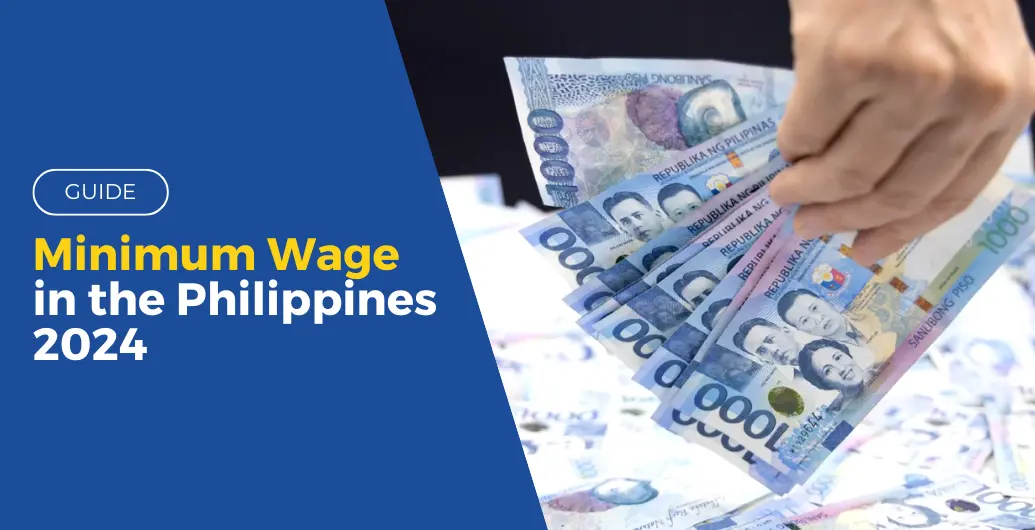Estimated reading time: 4 minutes
Learning about the minimum wage regulations in the Philippines is essential for both employers and employees. With diverse regional economies and sector-specific considerations, understanding minimum wage dynamics is crucial for ensuring fair compensation practices and promoting economic development.
Table of contents
What is Basic Salary?
Basic salary, similar to that of the minimum wage in terms of compensation, constitutes the core component of an employee’s compensation package. It encompasses the fixed amount before any additional benefits or deductions. Moreover, it serves as the foundation for calculating various allowances and bonuses. This includes overtime pay and performance-related incentives. For instance, when determining the overtime pay for an employee earning the minimum wage per hour, the basic salary serves as the basis for calculating the additional compensation.
What is the Minimum Basic Salary in the Philippines?
The minimum basic salary in the Philippines varies across regions and sectors, reflecting the decentralized nature of minimum wage regulations. Regional authorities have the autonomy to set minimum wage rates tailored to local economic conditions and cost of living standards.
Minimum Wage in the Philippines in 2024 by Region (UPDATED as of May 2024)
| REGION | MINIMUM WAGE RATE Non-Agriculture (PHP) | MINIMUM WAGE RATE (Agriculture) | |
| Plantation (PHP) | Non-plantation (PHP) | ||
| ARMM – Mindanao Region | 423.00 – 438.00 | 411.00 – 426.00 | 411.00 – 426.00 |
| CAR – CordilleraAdministrative Region | 430.00 | – | – |
| CARAGA – Caraga Region | 385.00 | 320.00 – 350.00 | 320.00 – 350.00 |
| I – Ilocos | 435.00 | 402.00 | 402.00 |
| II – Cagayan Valley | 450.00 | 430.00 | 415.00 |
| III – Central Luzon | 499.00 – 500.00 | 434.00 | 422.00 |
| IV-A – Calabarzon | 520.00 | 385.00 – 479.00 | 385.00 – 479.00 |
| IV-B -Mimaropa Region | 369.00 – 395.00 | – | – |
| IX – ZamboangaPeninsula | 381.00 | 368.00 | 368.00 |
| NCR – National Capital Region | 645.00 | 608.00 | 608.00 |
| V – Bicol Region | 395.00 | 395.00 | 395.00 |
| VI – Western Visayas | 450.00 – 480.00 | 440.00 | 440.00 |
| VII – Central Visayas | 420.00 – 468.00 | 415.00 – 458.00 | 415.00 – 458.00 |
| VIII – Eastern Visayas | 405.00 | – | 345.00 – 375.00 |
| X – Northern Mindanao | 423.00 – 438.00 | 411.00 – 426.00 | 411.00 – 426.00 |
| XI – Davao Regiono | 438.00 – 443.00 | 365.00 – 422.00 | 365.00 – 422.00 |
| XII – Soccsksargen | 390.00 – 403.00 | 382.00 | |
Living Wage vs. Minimum Wage
While the minimum wage sets a baseline for compensation, the living wage accounts for actual cost of living, including essential expenses such as housing and healthcare. Ensuring alignment with the living wage is crucial for promoting financial stability and reducing poverty levels. Unfortunately, in many cases, the monthly minimum wage in the Philippines may fall short of providing a living wage, necessitating additional support systems to uplift minimum wage earners out of poverty.
Also Read: DOLE: NCR and Western Visayas wage hike approved
Recent Wage Order Developments
Recent wage orders issued by the RTWPBs signify adjustments to minimum wage rates, aiming to enhance wage levels and safeguard worker welfare. These developments demonstrate the government’s commitment to fair labor practices and sustainable economic growth. The recent wage order for the Department of Labor and Employment (DOLE) in 2024 reflects ongoing efforts to improve wage levels for minimum wage earners.
Under the new wage order, the new minimum wage rate for workers in the non-agriculture sector shall be ₱462 per day, while for workers in the agriculture sector, it shall be ₱457 per day.
The second tranche under the recent wage order in the amount of ₱19 per day shall take effect on September 1, which brings the new minimum wage rate for workers in the non-agriculture sector to ₱481 per day and ₱476 per day for agriculture sector workers.
The RTWPB XI also granted a wage increase in the minimum wage for domestic workers under Wage Order No. RBXI-DW-03, which took effect on March 6.
From the current ₱4,500 unvaried monthly minimum wage rate across the region, the new minimum wage rates shall be ₱6,000 per month for domestic workers in chartered cities and first-class municipalities and ₱5,000 per month for domestic workers in other municipalities.
Also Read: GUIDE: How Much is the Wage Increase in 2023 in The Philippines?
Minimum Wage in USD and Economic Impact
Converting the minimum wage to USD provides insights into the country’s economic landscape and cost of living standards. The minimum wage in the Philippines remained unchanged at ₱610/day in 2024 from ₱610/day in 2023. While modest in USD terms, the minimum wage plays a vital role in ensuring decent living standards for Filipino workers and supporting economic development. The monthly minimum wage in the Philippines, when converted to USD, may vary significantly depending on prevailing exchange rates. However, it provides a benchmark for assessing the purchasing power of minimum wage earners in an international context.
Final Thoughts
In conclusion, exploring the minimum wage regulations in the Philippines requires a comprehensive understanding of regional dynamics and sector-specific considerations. By staying informed about wage order developments and ensuring compliance with labor laws, businesses can uphold fair labor practices and contribute to sustainable economic growth while supporting the well-being of Filipino workers.
Keep Reading: Guide: How Much is the Minimum Wage in The Philippines in 2023?

Leave a Reply